11 Ways to Work With a Windowless Room
http://decor-ideas.org 04/01/2015 23:13 Decor Ideas
They say you never know what you had till it’s gone, and that’s certainly true for windows. When dealing with a windowless room, you really start to miss the natural light and appreciate the openness they bring. But whether you’re planning a little corrective construction or just a quick fix, there are plenty of ways to bring that same feeling to your basement, den, kitchen and more.
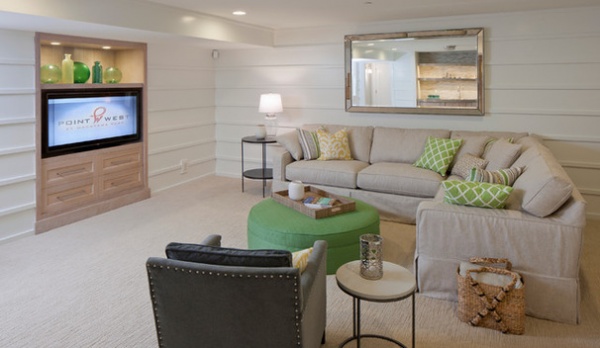
1. Mirrors. Adding a large mirror to your wall is one of the first ways to simulate the effect of a window, not just for bouncing some light but also for adding a sense of depth that breaks up claustrophobic wall planes. In a space with a low-ceiling, use as large a mirror as possible, reaching close to the ceiling (but not all the way up; stop 4 to 6 inches below) to distract from the ceiling line.
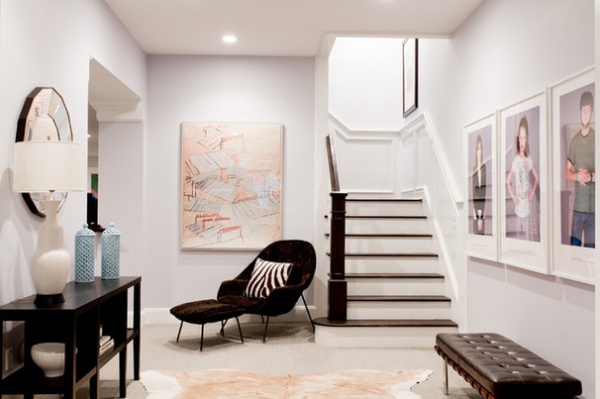
2. White walls. White (or very pale blue) walls help simulate the fresh, full-spectrum sparkle of natural sunlight, while subtly reflecting light from every source for the brightest look possible. Choosing one color for the walls and ceiling also helps the edges float away, so encroaching walls are not the focal point; rather, the items within earn the attention.
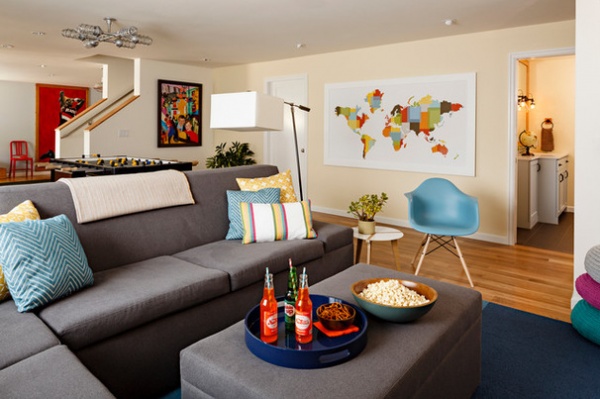
3. Large art. Similar to a mirror, a large art piece (especially one in a white or metallic frame with a lot of white background) breaks up walls like a window would and brings in a snap of lightness for those who don’t like white as a floor-to-ceiling color.
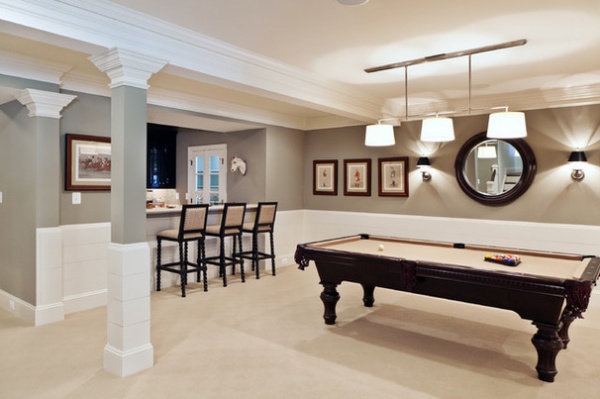
4. French doors. Adding windows to a doorway (by converting to French doors) also gives the eye that sense of peeking out into a space beyond, and lets a new ambient light source in, even if the adjacent “room” is simply a pantry. Add a few lights inside or a single ceiling fixture (with a cool fluorescent bulb), and the hint of light pouring out will give the illusion of daylight.
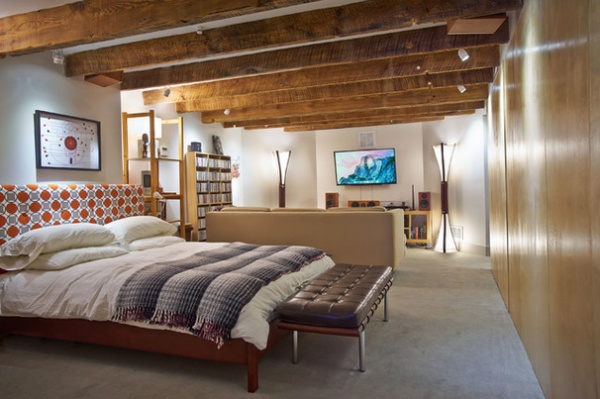
5. Hidden lights. Tucking a few lights where they can’t be seen helps give your room a sense of an indirect glow that mimics light pouring in from a nearby window. Try placing lamps between beams, behind furniture (such as behind a sofa) or tucked next to a bookcase to make the light source more mysterious.
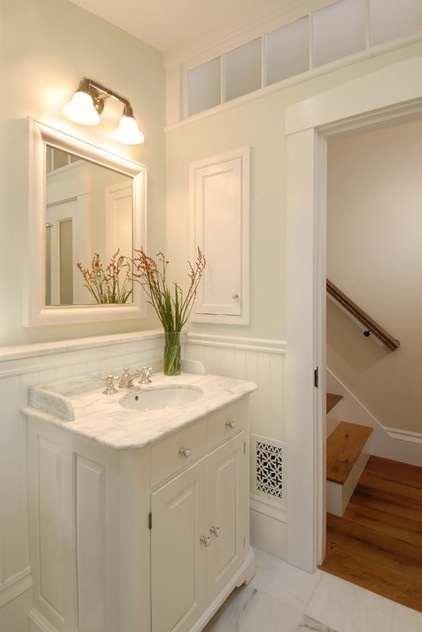
6. Transoms. Another architectural way to add a nonspecific light source is to add a window between a room and an adjacent space (especially if the next room over has natural light to share). Placed high enough, a transom window (technically, “transom” is the term for the piece of wall dividing a window and the door below) will open a space to new light without compromising privacy.
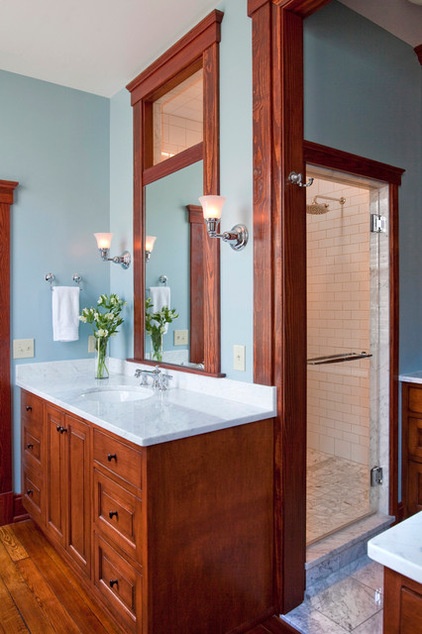
A transom window over a mirror can also help bring some extra light into a shower space for a little sense of morning sun with the morning routine.
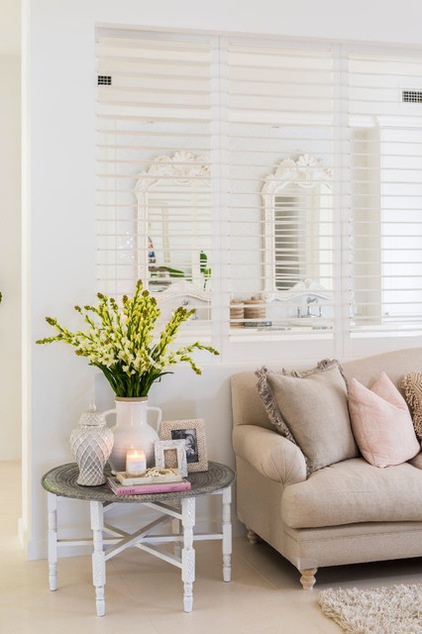
7. Internal windows. In a condo or townhouse where external windows cannot be added, full-size windows between living spaces (where privacy is not as important) can really open a space and allow light to be shared between them in a major way. Plus, you can always add a drapery or shade treatment to close off the view when necessary.
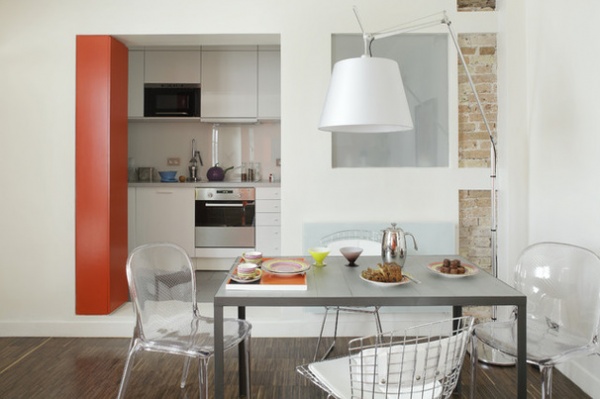
8. Frosted glass. In a kitchen, adding a pass-through allows not just food to be passed out but light to flow in, without completely exposing any dirty dishes to prying eyes. Filling in a pass-through with a frosted panel like this one is another excellent option for keeping kitchen clutter out of sight while letting light filter in.
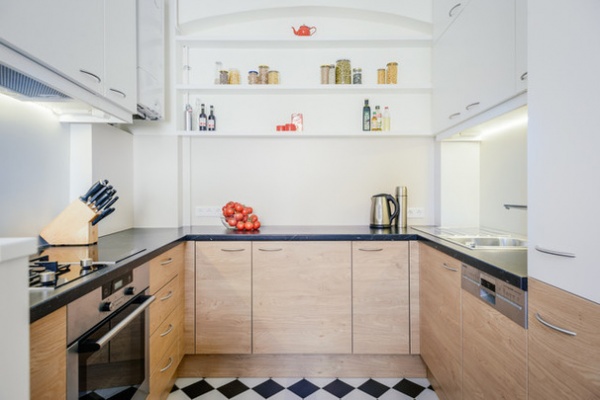
9. Undercabinet lighting. In a totally windowless kitchen, undercabinet lights are not only functional for task lighting, but they also help lighten the edges of the room so you don’t feel like you’re taking a time-out in a dark corner every time you make a meal. Especially when upper cabinets close in the space further, it’s key to add lightness and depth anywhere you can.
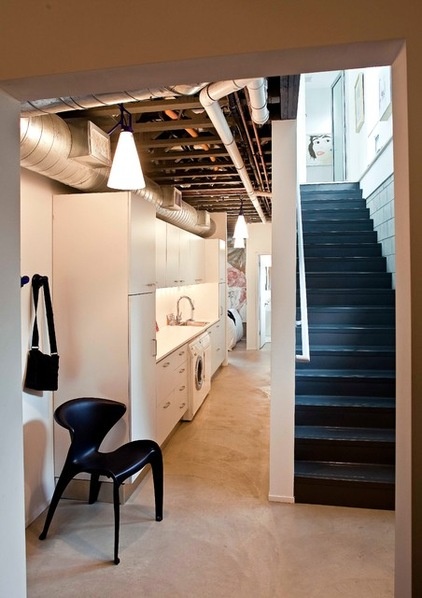
The same is true for a laundry room, especially in a windowless basement. Adding undercabinet lights, pot lights or a few pendants will brighten an area you might not consider important but probably spend a lot of time in.
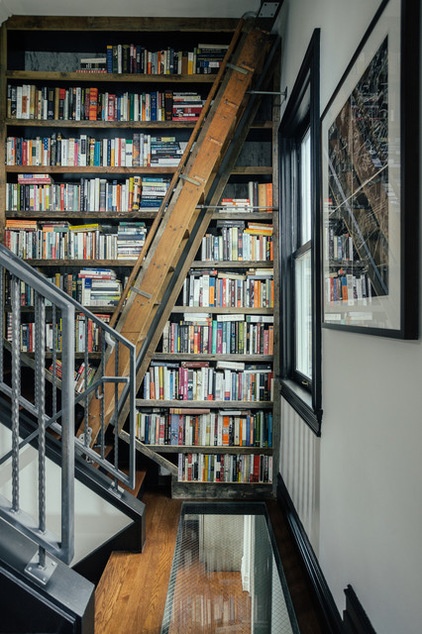
10. Ceiling exposures. This room has a window, you say? It’s true, there is a window on the wall, but the level below might not have one. That’s when the see-through ceiling is a good option. If you’re feeling brave during a renovation, adding an (architecturally approved, of course) window panel to the flooring can brighten and open the level below dramatically.
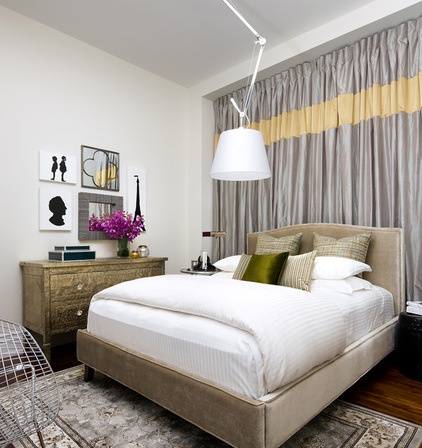
11. Full-wall drapery. Want to create the effect of a window without opening up? A full wall of drapery creates a beautiful backdrop to a bed and implies a sense of depth beyond, even if you never pull back the curtain.
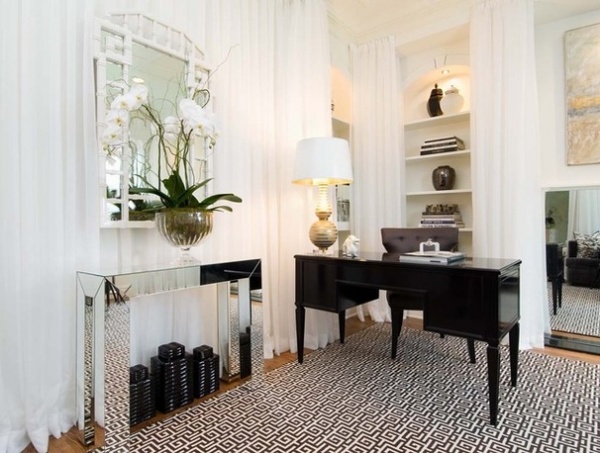
This treatment can even be used in other spaces to add a sense of ethereal lightness all over, especially with a white or pale sheer fabric draped over a wall in a matching color for soft edges with a heavenly sereneness.
Add a few mirrored finishes so the sight lines stretch on forever and you’ll have a space so wide open, you’ll forget your window worries altogether!
More:
8 Cost-Effective Ways to Get a High-End Look
Bathroom Workbook: 5 Ways to Open Up a Windowless Bathroom
Related Articles Recommended












